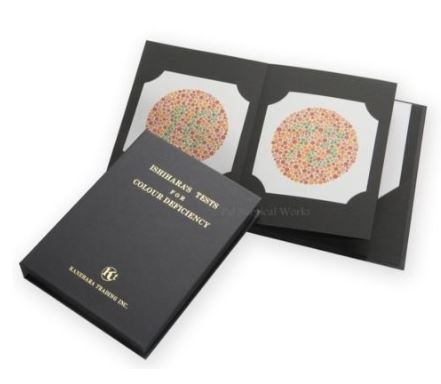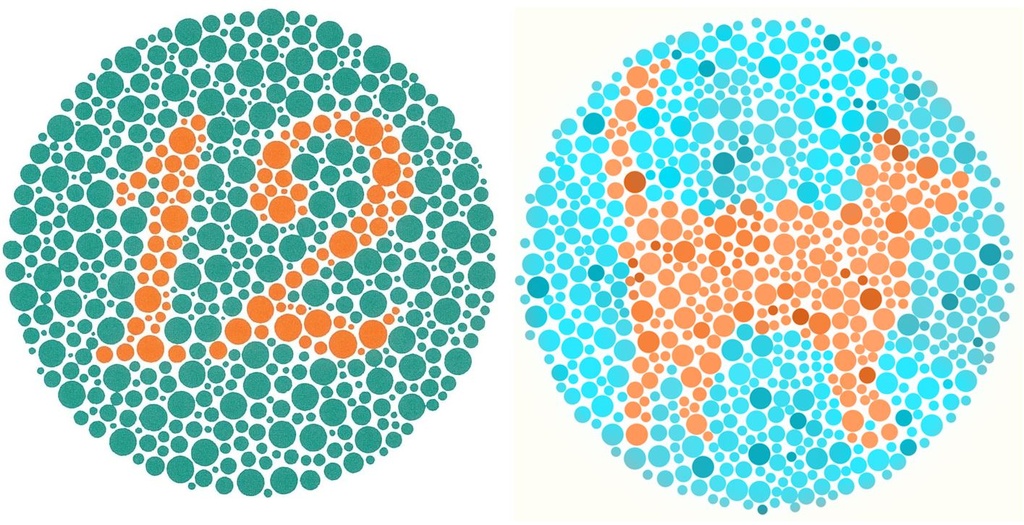ISHIHARA TEST, colour-discrimination, 38 plates
Valid Article
COLOUR-DISCRIMINATION EYE CHART
Definition
An ophthalmic chart with coloured numbers or shapes printed on coloured backgrounds used in testing colour vision.
The Ishihara test is a colour perception test for red-green colour deficiencies.
Synonym
Ishihara test
Specifications
Ishihara plates (EMEQISHI38-)
The test consists of a number of coloured plates, called Ishihara plates, each of which contains a circle of dots appearing randomised in colour and size. Within the pattern are dots which form a number or shape clearly visible to those with normal colour vision, and invisible, or difficult to see, to those with a red-green colour vision defect. Other plates are intentionally designed to reveal numbers only to those with a red/green colour vision deficiency, and be invisible to those with normal red/green colour vision.
- 38 cardboard plates: full test
- circle of dots randomised in colour
- numbers of different colour in the middle of the circles
Pseudo-isochromatic colour vision test (EMEQISHIP14)
The paediatric pseudo-isochromatic colour vision test contains objects (circle, star, square) and pictures (boat, balloon, dog) to make colour vision testing fun, quick and easy for all age groups - especially 3 to 6 year old pre-school children.
- 14 cardboard plates
- square of dots randomised in colour
- simple objects (circle, star, square) and pictures (boat, balloon, dog)
Instructions for use
Being a printed plate, the accuracy of the test depends on using the proper lighting to illuminate the page.
Proper testing technique is to give only three seconds per plate for an answer, and not allow coaching, touching or tracing of the numbers by the person tested. The test is best given in random sequence, if possible, to reduce the effectiveness of prior memorization of the answers.
Precautions for Use
It is important that the book of test plates should be kept closed, except during use, because undue exposure to sunlight causes fading of the colour plates.
MSF requirements
For detection of colour vision anomalies in patients with MDR-TB treatment using linezolid or ethambutol.




